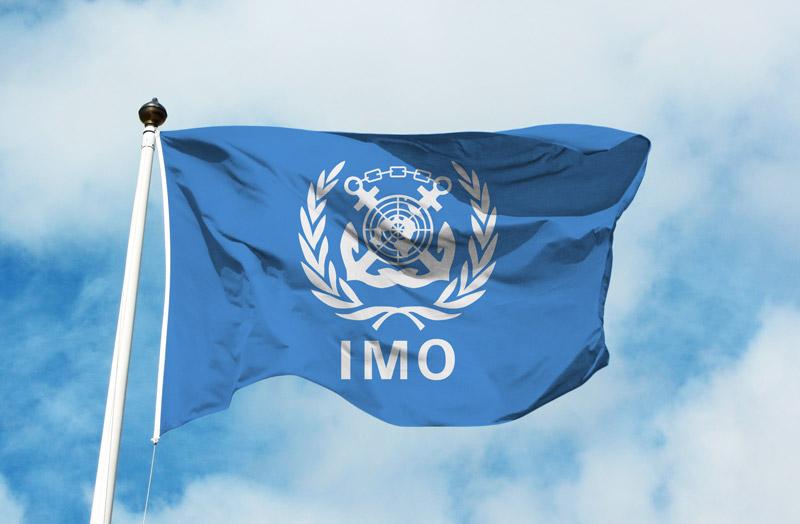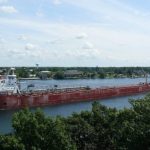At its 81st meeting in March 2024, the IMO MEPC adopted Resolution MEPC.387(81), with interim guidance for ships operating in challenging water quality conditions, and Circular BWM.2/Circ.82, with guidance on the temporary storage of treated sewage and/or grey water in ballast water tanks. This statutory news summarizes these topics, including how to re-approve an amended BWMP.
Interim guidance for ships operating in challenging water quality conditions (MEPC.387(81))
The purpose of this guidance is to assist ships to comply with the BWM Convention and the D-2 discharge standard when a type approved Ballast Water Management System (BWMS) encounters operational limitations or has difficulty meeting operational demand in Challenging Water Quality (CWQ) conditions. This also applies when the BWMS has been properly installed, operated, and maintained.
Challenging Water Quality (CWQ)
CWQ refers to the ambient uptake of water, having, for example, high total suspended solids or turbidity. CWQ conditions may result in the BWMS to be temporarily inoperable due to, for example, filter clogging or causing the BWMS to operate outside its system design limitations. However, the guidance does not address situations in which a BWMS is inoperable for reasons unrelated to CWQ, such as technical failures of the BWMS. Such situations should continue to be addressed on a case-by-case basis in accordance with the guidance on contingency measures under the BWM Convention (BWM.2/Circ.62). It should be noted that the interim CWQ guidance does not address situations in which the temperature and/or salinity of the ambient uptake water are outside of the BWMS design limitations as stated in the type of approval certificate.
Amendments to the Ballast Water Management Plan (BWMP)
Ships should include procedures for managing CWQ conditions in their approved BWMP. The procedures for managing CWQ conditions should be ship-specific and consider the operational limitations of the BWMS installed and the operational patterns of the ship. These procedures should include the steps recommended by MEPC.387(81) and should outline the actions that the ship’s crew can take to restore or maintain the effective operation of a BWMS even when operating in CWQ conditions.
Bypassing the BWMS should be the last resort. However, if bypassing the BWMS is unavoidable, only the minimum ballast required to maintain the safety and operational demands of the ship shall be taken up. Moreover, after any bypassing of the BWMS, the affected ballast tanks need to be “decontaminated” to again restore compliance with the D-2 standard. “Decontamination” is to replace the untreated ballast water in each contaminated tank through ballast water exchange, flushing and final treatment via the BWMS.
The need to apply the procedures for managing CWQ should be assessed on a voyage-by-voyage basis. Even if CWQ issues were experienced at a certain location in the past, at least an attempt to treat ballast water with the BWMS must be made. CWQ conditions may vary from berth to berth in the same port or may be impacted by ship and/or nearby port operations. CWQ conditions can also vary by the time of day, tide, weather or season.
Guidance on the temporary storage of treated sewage and/or grey water in ballast water tanks (BWM.2/Circ.82)
The purpose of this guidance is to provide a procedure for the temporary storage of Treated Sewage (TS) and/or Grey Water (GW) in ballast water tanks. It also includes guidance on the required changeover procedure from ballast water storage to treated sewage and/or grey water storage and back to ballast water storage. The discharge of ballast water and TS/GW should adhere to the following principles:
- The discharge of ballast water should comply with the BWM Convention.
- The discharge of TS should comply with MARPOL Annex IV where relevant. Any local TS/GW discharge requirements should be considered.
The ship’s BWMP should include a ship-specific changeover procedure, which specifies the pump and piping associated with the dual-purpose ballast water tanks and provides specific details on how flushing is conducted.
Approval of amended Ballast Water Management Plan (BWMP)
DNV recommends that the new IMO guidance on managing challenging ballast water is implemented by amending the BWMP. If temporary storage in BW tanks is applicable for the managed ship, the new guidance on the temporary storage of treated sewage and/or grey water should also be included in an amended BWMP.
At the time of issuing this technical news, no flag administration has yet required such an amendment of the BWMP for existing ships. However, Resolution MEPC.387(81) states, ”
Administrations should ensure that ships are fully prepared to encounter CWQ”. Hence, flag administrations are expected to implement Resolution MEPC.387(81) and include it in the requirements listed in their future circulars or bulletins. Similarly, amendments of the BWMP in accordance with Circular BWM.2/Circ.82 are expected to be required by some flag administrations. The BWMP for newbuildings should consider these new guidance in any case.
If a BWMP is amended by attaching an addendum or appendix to the BWMP, the ship owner/manager may request voluntary approval by DNV when DNV is authorized as an RO by the flag for approval of the BWMP. Nevertheless, DNV’s current understanding is that statutory approval of non-mandatory documents is not required, unless the flag administration explicitly requires the approval of such documents. Only if an existing BWMP is replaced with a new revision of the complete BWMP with new chapters is approval of the revised BWMP by DNV as the RO is required.
Source: Hellenic Shipping News






